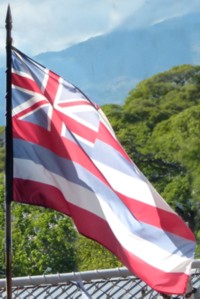Should we be worried?
|
|
"Yesterday, as I stood at my last stop on the campaign trail, I'll never be doing a rally again, can you believe it? I think we've done 900 rallies approximately from. Can you imagine? 900, 901 or something. A lot of rallies. And it was sad. Everybody was sad..."
"They said that many people have told me that God spared my life for a reason. And that reason was to save our country and to restore America to greatness. And now we are going to fulfill that mission together..."
"I will govern by a simple motto: Promises made, promises kept. We're going to keep our promises. Nothing will stop me from keeping my word to you, the people. We will make America safe, strong, prosperous, powerful, and free again..."
"Success is going to bring us together and we are going to start by all putting America first.
"We have to put our country first for at least a period of time. We have to fix it. Because together we can truly make America great again for all Americans. So I want to just tell you what a great honor this is. I want to thank you. I will not let you down. America's future will be bigger, better, bolder, richer, safer and stronger than it has ever been before. God bless you and God bless America. Thank you very much. Thank you very much." |
Presumably, 50-year-old volunteer fire chief; father of young daughters; and a committed church-going Christian: Corey Comperatore, lost his life as a part of God's plan, along with fellow rally goers: David Dutch and James Copenhaver, who also stopped bullets; Dutch critically.
Nevertheless, Trump certainly loved his rallies.
The most talked about moment in the The Harris-Trump debate was when Harris mocked his rallies and Trump responded by asserting that Haitian immigrants in Springfield were eating the residents' pets.
|
|
| "At the ABC News presidential debate, former President Trump went on a tear accusing Haitian migrants in Springfield, Ohio, of eating pets." |
This was the real Springfield, as opposed to the Simpsons' fictional one.
This man is about to return as 'Leader of the Free World'.
Yet, he saw no warning signals before repeating the Springfield nonsense. It reminded me of his suggestion, also picked up on Social Media, that Covid-19, might be overcome with household disinfectant.
|
|
| President Trump claims injecting people with disinfectant could treat coronavirus |
And his claim that the F-35 stealth fighter was actually invisible.
|
|
| In a Thanksgiving speech to the US coast guard, President Donald Trump hails the F-35 fighter jet, calling it an "invisible" plane that they "enemy cannot see". |
We already knew that his grasp of American, let alone World, history was woefully inadequate for someone holding, high office. And this gets to the heart of the matter: he's an ignoramus.
I don't mean he's stupid but he's lacking in the most basic knowledge of how the world actually is.
No doubt the occasional cat or dog does get eaten by a homeless person but ravenous immigrants, en masse, falling on the pets of Springfield?
The average twelve year old could tell him that this story is unlikely to be true. That same child could tell him that a stealth-jet is not actually invisible (to the naked eye); and that injecting disinfectant; or exposing yourself to radiation, sufficiently energetic to kill a virus infecting you, would very likely kill you too.
But his ignorance is legendary:
|
|
| Donald Trump often discusses history, and he has a unique way of talking about it. |
Yet, on several cruises that we have been on with older Americans: "What do you think of Donald Trump" is a standard question at dinner. A few don't like him but for the great majority: 'The Don' can do no wrong. All the negative things said about him are just 'fake news'. They are 'welded on' regardless.
Now this majority of Americans have got what they wished for - manifest destiny? As bob Dylan sang: With God on Our Side.
I'm worried.

